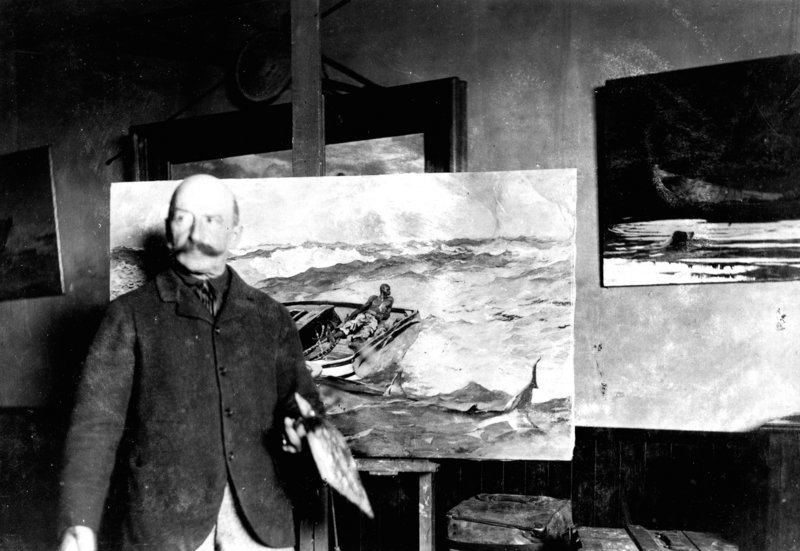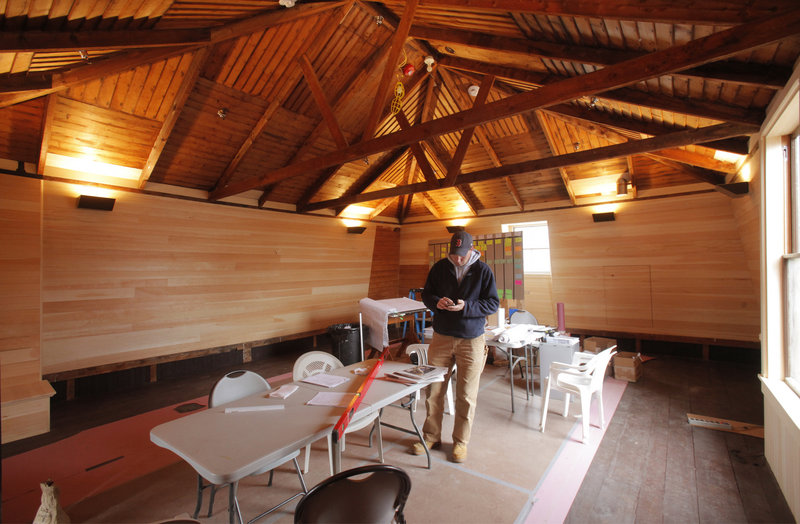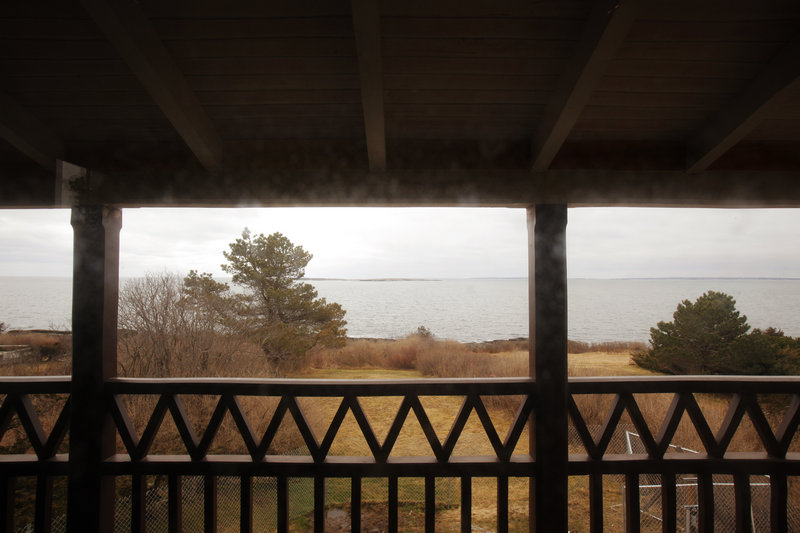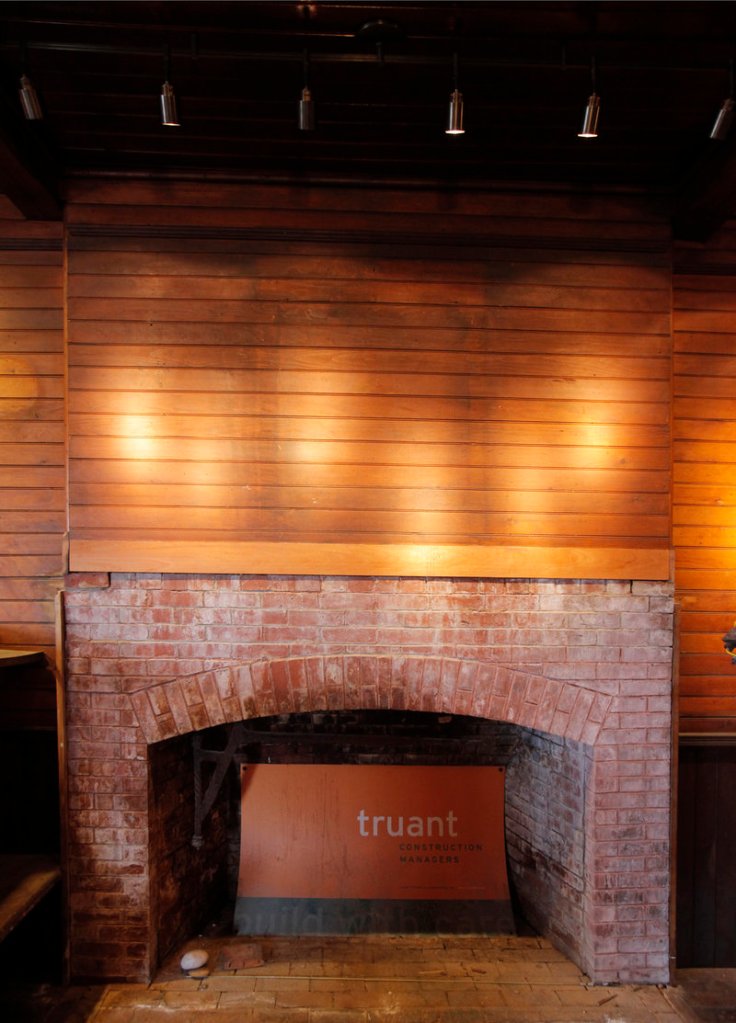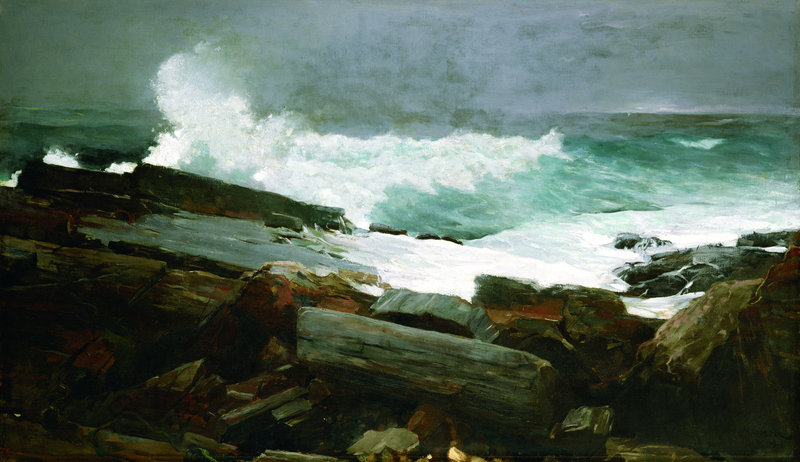SCARBOROUGH — Before he came to Maine in the late 1800s, Winslow Homer made paintings and drawings that defined American culture. From his sketches of Civil War battlefields to his paintings of sailboats on the sea and of youngsters playing in the fields, the Boston-born artist projected a collective optimism about America.
He represented the best that his country had to offer. That which was American also was Winslow Homer.
When Homer came to Maine in 1883, things began to change for him both spiritually and artistically. Figures disappeared from his paintings, and his art became less narrative and more abstract. He reached for big ideas that stretched beyond the horizon and into an unknown place.
If Homer’s early work established his place in the art world in post-Reconstruction America, the paintings he made in Maine at the turn of the century provided a foundation for Modernism and ensured his reputation for all time. Homer completed many of the most important paintings of his career, and some of the most iconic images in American art history, while in Maine.
Homer’s world during this time centered on a little green clapboard house set back from the rocks at Prouts Neck. He settled into a quiet studio by the sea, converting a stable designed by architect John Calvin Stevens into a cozy, functional home. He added a balcony that overlooked the nearby ledges and ocean, creating an awkward, boxlike abode distinguished by a pair of tall brick chimneys.
But it served him well. Here, with the ocean’s surf crashing on the rocks just beyond his windows, Homer created the pictures that characterized the late period of his already successful career.
This fall, the Portland Museum of Art will complete a six-year restoration of that studio. The museum, which purchased the building in 2006 from Homer’s heirs, is in the final stages of a $10.5 million fundraising campaign for the project.
Almost all the restoration work is complete, and the PMA plans a gala celebration in September. In conjunction with the opening of the studio at that time, the museum will also open a major exhibition, “Weatherbeaten: Winslow Homer and Maine,” on Sept. 22.
The art show will include most of Homer’s major oils and watercolors that he made during his time at Prouts Neck. It will feature works from the museum’s own collection, as well as key paintings on loan from museums across the country, including the Art Institute of Chicago, the Smithsonian American Art Museum in Washington, D.C., the Museum of Fine Arts in Boston and the Pennsylvania Academy of the Fine Arts.
But the centerpiece – the crown jewel in the PMA’s tribute to Homer – will be his studio.
MORE THAN A SUMMER RESIDENT
After moving to Prouts Neck in 1883, Homer remained in Maine until his death at the studio in 1910. He spent most of his time here, hunting and fishing locally and gathering wood for his fireplace from nearby woods.
He was more than a summer resident. He stayed deep into the winter, until his rum bottle froze.
Homer scribbled notes on the walls and etched his name in window glass. Those personal details remain intact, and will be prominently featured when the studio reopens. Reproductions of the paintings he made at the studio will be displayed, along with personal items and the remnants of brushes the museum discovered during an archaeological dig at the studio.
The restoration project is one of the most ambitious and important the museum has undertaken, said PMA director Mark Bessire, who began his duties in spring 2009 when the campaign was at the halfway point. Bessire’s predecessor, Daniel E. O’Leary, began the project with the purchase of the studio and led the early fundraising effort.
The museum has raised more money for other campaigns, but never during such difficult economic times, Bessire noted. The anatomy of the Homer campaign offers a lesson in the importance of the artist, the scope of his influence and the allure of the studio itself, which has been a National Historic Landmark since the 1960s.
The PMA remains about $400,000 shy of its $10.5 million goal. If it raises the remaining $400,000 by June 30, two challenge grants – one for $700,000 and another for $250,000 – will kick in, enabling the museum to exceed its goal.
It recently received a pledge of $100,000 from the Portland-based Libra Foundation, bringing the total raised to more than $10 million.
“I can see it. We are almost there,” Bessire said.
‘PRESERVING A VITAL LINK TO OUR PAST’
About 45 percent of the money raised so far has come from outside of Maine, said Jeffrey D. Kane, chair of the Winslow Homer Studio Campaign.
“Homer translates as a national figure. Because of his status in the art world, this is of interest beyond Portland, beyond Maine and even beyond New England,” Kane said. “A lot of people who are aware of what is going on in the art world have seen a lot of artist studios just disappear from the scene. This campaign is about preserving a vital link to our past.”
The percentage of out-of-state money is unusual for a cultural organization in Maine, making the Portland museum the envy of its peers across the state, said Scott Schnapp, executive director of the Maine Association of Nonprofits. One unnamed national corporation has pledged $100,000 to underwrite the “Weatherbeaten” exhibition. That pledge is over and above the money raised for the studio restoration.
Maine’s large environmental groups raise significant sums of money out of state, but few others succeed in tapping the resources of summer residents and out-of-state foundations or corporations, Schnapp said.
“Most of the rest of us tend to look for support within the state. This speaks extremely highly of the PMA’s ability to make this happen,” he said.
The money breaks down like this: The museum’s Committee of One Hundred is responsible for $3 million; foundations have given $2.6 million; museum trustees have donated almost $2.5 million; gifts from other individuals total $1.8 million; and corporations have given about $170,000.
In addition to the Libra Foundation, among the philanthropic foundations that have donated to the campaign are the Henry Luce Foundation Inc. and the Wyeth Foundation of American Art.
Bessire is particularly proud that the museum has reached the state’s wealthy summer residents. They come to Maine for much the same reason that Homer himself did.
“A lot of people who come to Maine in the summertime love Maine for what it is,” Bessire said. “They love what Maine represents, which is something very important in their life, whether it’s a simpler life, a quieter day or a place that is important to their family. If we want Maine to stay that way, we have to find ways to encourage our summer residents to support us so we can keep Maine great.
“Because of its broad appeal and because of Homer himself, this campaign has helped us tap into a group of people who love Winslow Homer and love the state of Maine. We’re very proud of that.”
Staff Writer Bob Keyes can be contacted at 791-6457 or at:
bkeyes@pressherald.com
Twitter: pphbkeyes
Send questions/comments to the editors.


